What Are Marine Mooring Chocks
A marine mooring chock is a device used to secure mooring lines or ropes on ships and boats. It is usually a strong metal or composite fitting in the shape of a U or V, with smooth, rounded surfaces to protect the mooring lines.
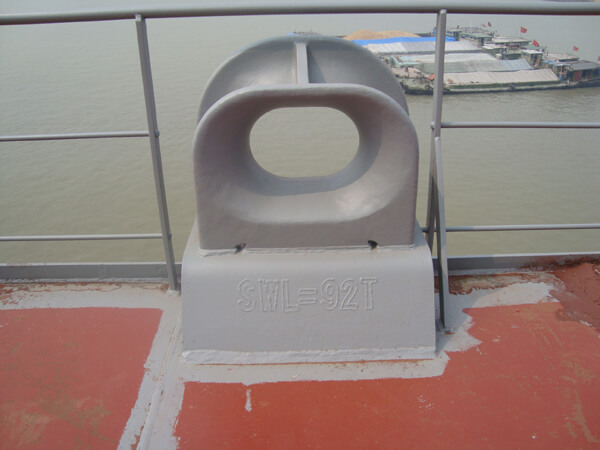
Different Types Of Marine Mooring Chocks
Various types of marine mooring chocks are used to secure vessels in place during various nautical operations.
Roller Chock
This mooring chock has rollers that enable for smooth movement of mooring lines, decreasing friction and line damage. Roller chocks are widely employed on ships with longer mooring lines, and they give versatility in mooring setups.
Closed Chock
Closed chocks feature a closed circular or oval shape with a small aperture, allowing mooring lines to travel in a secure and confined course. They prevent inadvertent mooring line release and are appropriate for yachts with smaller mooring lines and limited space.
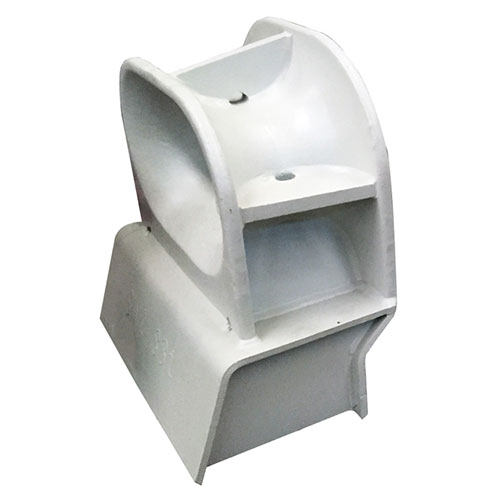
Open Chock
Open chocks have an open U-shape or V-shape with bigger openings, allowing for easier mooring line installation and removal. They allow mooring arrangement and line angle versatility and are typically employed in vessels with larger mooring lines and extensive deck area.
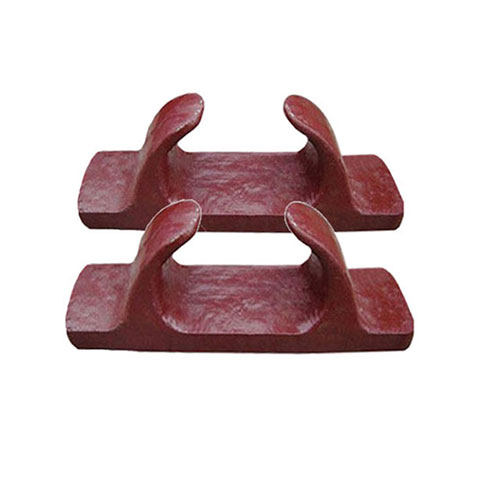
Bitt Chock
Bitt chocks are a hybrid of a roller chock and a closed/open chock. They have a roller on top and a closed or open form below, allowing for smooth movement as well as secure closure of mooring lines. Bitt chocks are extensively used in ports and harbours for secure mooring of vessels with varying mooring line sizes and deck area limits.
Panama Chock
Panama chocks feature a curved design with a bigger hole, allowing mooring lines to travel in a wide and smooth course. They are often utilised in offshore and heavy-duty mooring operations and are appropriate for vessels with larger mooring lines and heavier loads.
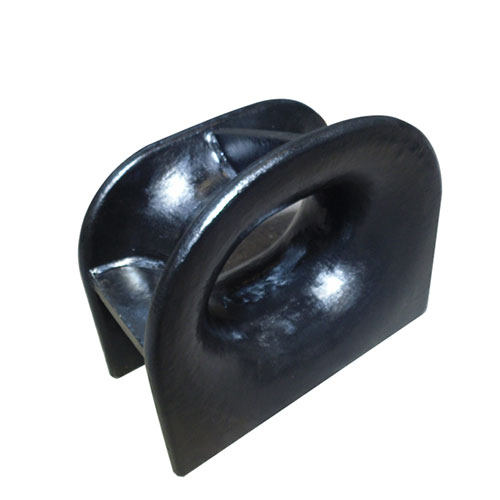
T-Head Chock
T-head chocks have a T-shaped form with apertures on the top and sides that allow mooring lines to pass through. They are extensively used in shipyards, dry docks, and marine building projects and are appropriate for vessels with intricate mooring systems.
Hinged Chock
Hinged chocks contain a hinged mechanism that allows the chock to move, allowing for flexibility in accepting varying mooring angles. They are appropriate for vessels with variable mooring conditions and are often used in floating docks, offshore facilities, and other dynamic mooring situations.
Design And Construction of Marine Mooring Chock
Marine mooring chock design and construction are crucial to ensuring its effectiveness and durability in securing vessels during mooring operations.
Material selection
1. Choosing appropriate materials for marine settings (e.g., stainless steel, cast steel, ductile iron) 2. Ensuring materials are corrosion, wear, and fatigue resistant
3. Adherence to relevant industry norms and regulations for marine-related materials
Design considerations
1. Choosing the best type of mooring chock for the vessel and application
2. Taking into account vessel size, type, and mooring line characteristics (e.g., diameter, breaking strength)
3. During mooring operations, calculate loads and forces on the mooring chock. (e.g., static and dynamic loads)
4 Including safety factors to preserve structural integrity and avoid overloading
5. Taking into account environmental circumstances (such as wave loads and tidal currents) as well as site-specific considerations
6. Depending on the design requirements, incorporate appropriate features such as rollers, hinges, and openings.
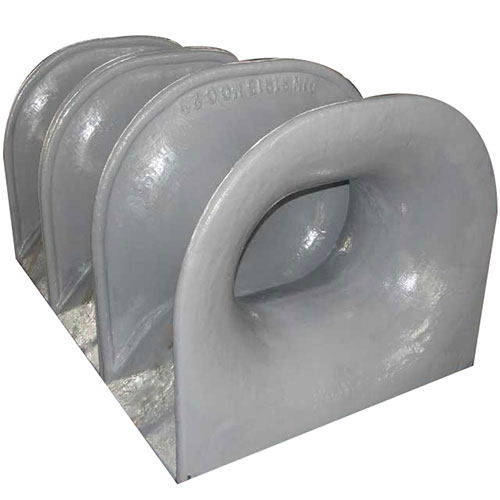
Construction and fabrication
1. Using proven fabrication and manufacturing techniques for marine mooring chocks
2. Using correct welding and fabrication procedures to obtain the desired structural integrity.
3. Thorough inspections and quality control throughout the fabrication process
4. Protecting the mooring chocks from corrosion and wear by coating them.
5. Carrying out load testing and certification to certify the mooring chocks’ performance
Compliance with Standards and Regulations
1. Adherence to industry norms and regulations, such as those established by classification societies, international marine organizations, and local governments
2. Ensuring that mooring chocks meet the applicable load capacity, material qualities, and performance parameters.
3. Obtaining required certificates, approvals, and paperwork for regulatory and compliance requirements
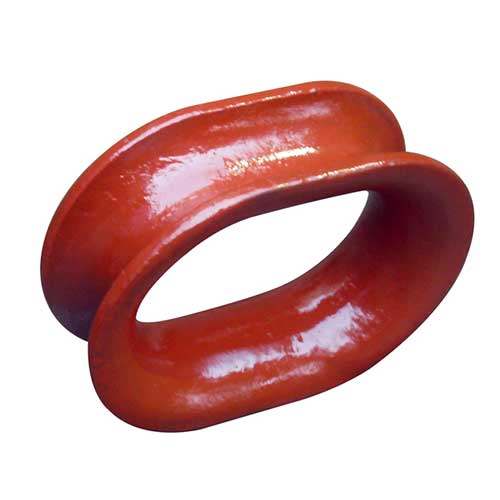
Functions And Benefits Of Marine Mooring Chock
Marine mooring chocks are essential for maintaining safe and effective vessel mooring operations.
Functions of Marine Mooring Chocks
1. Mooring line securing
The purpose of marine mooring chocks is to secure mooring lines, ropes, or wires from vessels to permanent or floating structures such as piers, jetties, docks, buoys, and mooring bollards.
2. Load distribution
Mooring chocks disperse the weights generated by vessels during mooring operations, minimising stress and strain on mooring lines and preventing potential vessel and mooring structure damage.
3. Contributing to friction and stability
Mooring chocks offer friction to keep mooring lines from slipping or sliding, providing vessel stability and preventing unintentional vessel movements.
4. Making mooring procedures run more smoothly
Marine mooring chocks provide smooth and controlled mooring operations, allowing vessels to be safely and efficiently fastened in place under a variety of environmental and operating conditions.
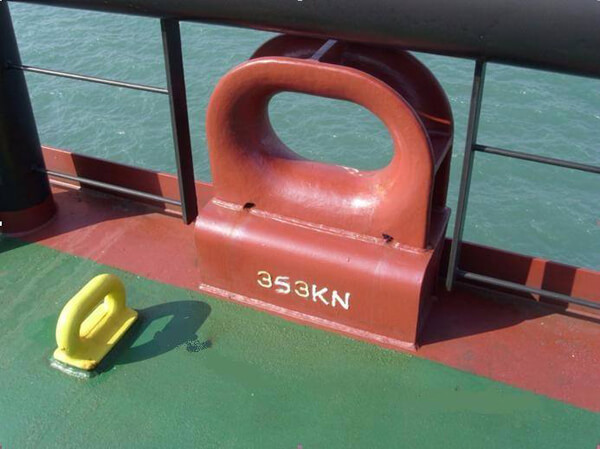
Benefits Of Marine Mooring Chocks
1. Improving safety
Marine mooring chocks that are properly built and fitted contribute to the safety of mooring operations by preventing accidents, injuries, and damages caused by uncontrolled vessel movements. They guarantee that mooring lines are securely held in place, reducing the chance of line breakdown or disconnection while the vessel is moored.
2. Improving operational effectiveness
Marine mooring chocks make mooring operations more efficient by allowing vessels to be swiftly and securely fastened in place. This decreases downtime, reduces departure and arrival delays, and enhances the overall operating efficiency of marine vessels.
3.Protection of the vessel and the mooring structure
Mooring chocks distribute loads and protect mooring lines from excessive stress, safeguarding both the vessel and the mooring structure from potential damage caused by extreme forces. This increases the service life of both the vessel and the mooring structure, lowering repair and replacement expenses.
4. Increased durability
Marine mooring chocks are often made of durable materials and coatings that are resistant to corrosion, wear, and fatigue. This helps to extend their service life, which reduces the need for frequent replacements and lowers maintenance expenses.
5. Offering adaptability
Mooring chocks come in a variety of forms, sizes, and combinations, making them versatile and adaptable to varied vessels, mooring layouts, and environmental circumstances. This enables more mooring versatility, accommodating a wide range of vessel sizes, types, and mooring requirements.
Summary
Mooring chocks are necessary for the secure and successful mooring of ships and boats, preventing drifting, shifting, or damage to the vessel and its surroundings.

